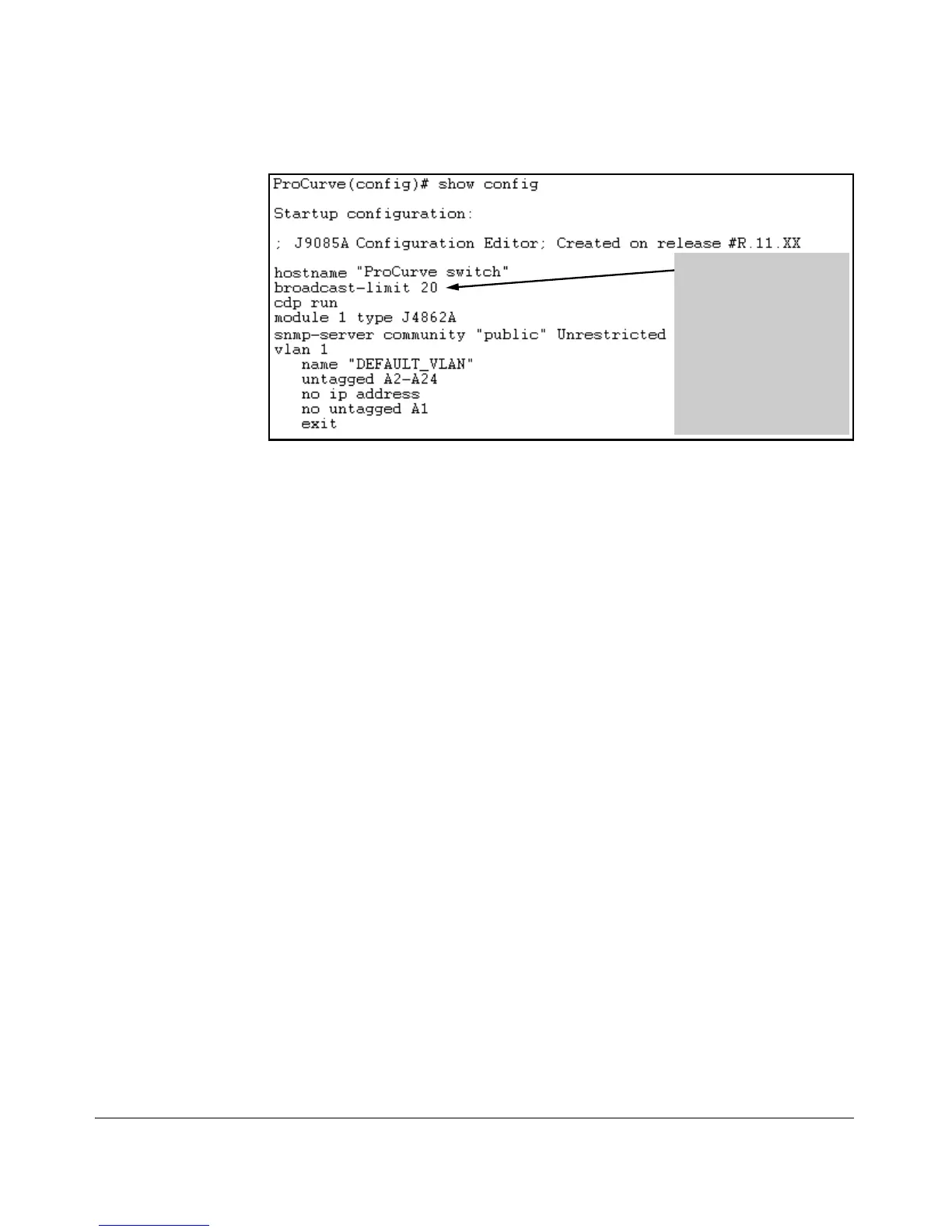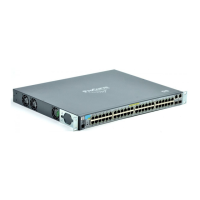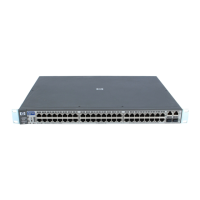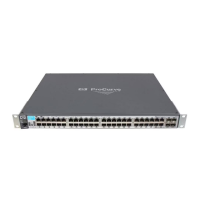Port Status and Basic Configuration
Viewing Port Status and Configuring Port Parameters
Displays the startup-config
file. The broadcast limit
setting appears here if
configured and saved to
the startup-config file by a
write memory command.
You must reboot the switch
to implement the new
setting.
Figure 10-5. Example of Displaying a Broadcast-Limit Setting
Using show running displays a similar output for the running-config file. Refer
to the Note on page 10-11.
Configuring Auto-MDIX
Copper ports on the switch can automatically detect the type of cable config-
uration (MDI or MDI-X) on a connected device and adjust to operate appro-
priately.
This means you can use a “straight-through” twisted-pair cable or a “cross-
over” twisted-pair cable for any of the connections—the port makes the
necessary adjustments to accommodate either one for correct operation. The
following port types on your switch support the IEEE 802.3ab standard, which
includes the “Auto MDI/MDI-X” feature:
■ 10/100-TX ports
■ 10/100/1000-T ports
Using the above ports:
■ If you connect a copper port using a straight-through cable to a port on
another switch or hub that uses MDI-X ports, the switch port automati-
cally operates as an MDI port.
■ If you connect a copper port using a straight-through cable to a port on
an end node, such as a server or PC, that uses MDI ports, the switch port
automatically operates as an MDI-X port.
10-12
